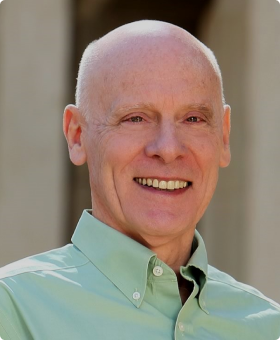This article was originally authored by Dr. Hugh Ross and is republished here with permission from Reasons to Believe, a ministry dedicated to integrating science and faith. All rights reserved by the original publisher. To explore more resources, visit their website Reasons to Believe.
During one of my ministry trips to Hong Kong, several Chinese science professors took me to a famous restaurant for a traditional dinner. The two-meter-diameter lazy Susan was covered with foods I didn’t recognize—except for the sea cucumbers. The professors joked that they had proof Eve was not Chinese, since she didn’t eat the serpent. They then informed me I had just consumed the tail portion of a snake.
The global study on the human diet
A new study shows that humans are not alone in eating a wide variety of foods—but we do it best. Humans are the most widely distributed terrestrial mammal, thanks in part to hyper-omnivory and prey-switching ability. No other species consumes such a diverse range of organisms.[1] Humans thrive across multiple trophic levels—from the base of the food web to the apex predator.[2]
The diet study and its findings
A team led by Michael Bird conducted a global study of ancient and modern human diets using 13,666 analyses of human collagen and keratin samples.[3] They demonstrated that carbon and nitrogen isotope ratios in collagen and keratin accurately reflect diet composition. Their results revealed that before industrialized agriculture, humans had a much broader diet.
The study noted that “the isotope dietary breadth of modern humans is highly compressed when compared to populations predating the development in 1910 of modern industrial fertilizer by the Haber-Bosch method.”[4]
The impact of modern agriculture
The Haber-Bosch process enabled near-limitless fertilizer production from atmospheric nitrogen. Today, global use exceeds 100 million tonnes per year.[5] This innovation increased food production but dramatically reduced dietary diversity. Except for isolated tribes, most humans now consume a narrow range of foods dominated by cultivated crops like wheat, rice, corn, and soy.
Implications of the diet study
The findings highlight the unique design of human beings. Humans were created to thrive in both low- and high-technology environments. During the last ice age, while other hominins such as Neanderthals and Denisovans disappeared, humans survived and multiplied thanks to their adaptability and efficiency as hunter-gatherers.[6]
Human anatomy, physiology, and intelligence allow safe gathering and hunting across all ecosystems. As Genesis 1:26 declares, God made humans to rule over all Earth’s creatures.
The design of the human digestive system
The human digestive tract complements our anatomical features, enabling processing of a wide variety of foodstuffs while maintaining mobility and productivity. Unique features in the human brain, arms, and hands made it possible to control fire and create grinding tools and hearths that expanded the human diet.[7] These advancements reduced labor and time spent securing calories and nutrients.
Food production and human progress
Modern civilization has further reduced the labor required for food production. In the United States, only about one percent of the labor force now produces raw foodstuffs. This efficiency allows people to pursue science, engineering, technology, education, and the arts. Humanity’s capacity to thrive on both highly varied and limited diets is evidence of intentional design—one that allows us to focus on purpose beyond survival.
Endnotes
- Hugh Ross, “Confirmation That Early Humans Were Making Bread,” Today’s New Reason to Believe (August 27, 2018). ↑
- Stefani A. Crabtree, Douglas W. Bird, and Rebecca Bliege Bird, “Subsistence Transitions and the Simplification of Ecological Networks in the Western Desert of Australia,” Human Ecology 47 (April 2019): 165–177, doi:10.1007/s10745-019-0053-z; Jennifer A. Dunne et al., “The Roles and Impacts of Human Hunter-Gatherers in North Pacific Marine Food Webs,” Scientific Reports 6 (2016): id. 21179, doi:10.1038/srep21179. ↑
- Michael I. Bird et al., “A Global Carbon and Nitrogen Isotope Perspective on Modern and Ancient Human Diet,” Proceedings of the National Academy of Sciences USA 118, no. 19 (May 11, 2021): id. 2024642118, doi:10.1073/pnas.2024642118. ↑
- Chaoqun Lu and Hanqin Tian, “Global Nitrogen and Phosphorus Fertilizer Use for Agriculture Production in the Past Half Century,” Earth System Science Data 9, no. 1 (March 2, 2017): 181–192, doi:10.5194/essd-9-181-2017. ↑
- Jochen Schmitt et al., “Carbon Isotope Constraints on the Deglacial CO₂ Rise from Ice Cores,” Science 336, no. 6082 (May 11, 2012): 711–714, doi:10.1126/science.1217161. ↑
Go Deeper

Dr. Hugh Ross
Hugh Ross is the founder and senior scholar of Reasons to Believe, an organization dedicated to communicating the compatibility of science and the Christian faith. While in college, Hugh committed his life to Jesus Christ after his study of cosmology convinced him of the existence of a Creator, specifically the God of the Bible. Hugh holds a degree in physics from the University of British Columbia and a PhD in astronomy from the University of Toronto. After five years on the Caltech faculty, he transitioned to full-time ministry and still serves on the pastoral team at Christ Church Sierra Madre. His writings include journal and magazine articles, hundreds of blogs, and numerous books-Why the Universe Is the Way It Is, Improbable Planet, Designed to the Core, and Rescuing Inerrancy, among others. He has spoken on hundreds of university campuses as well as at conferences and churches around the world and participates in the weekly Stars, Cells, and God podcast.



.webp)

Leave a comment